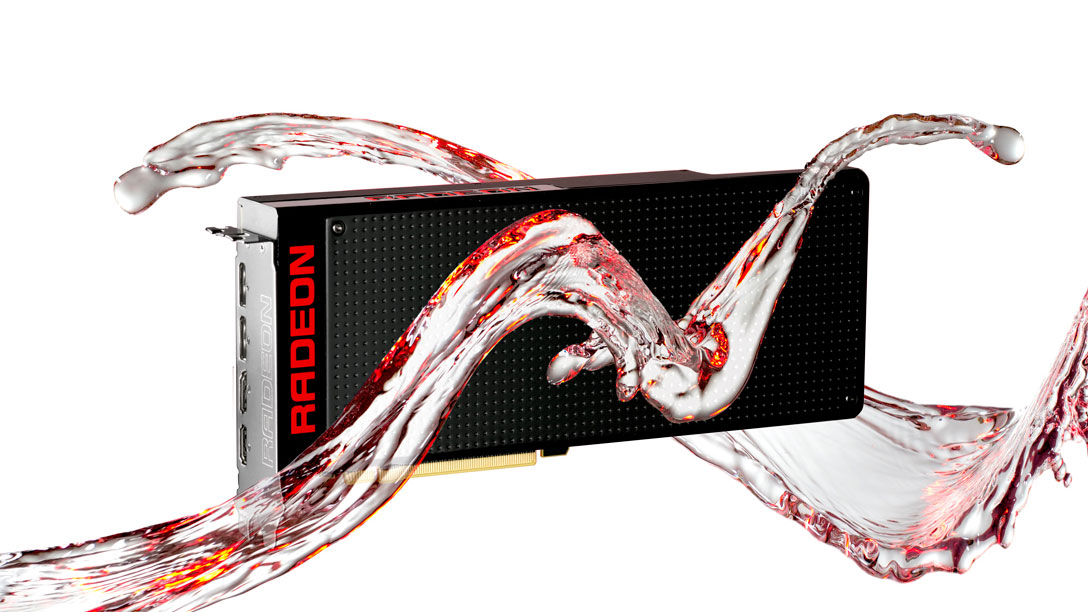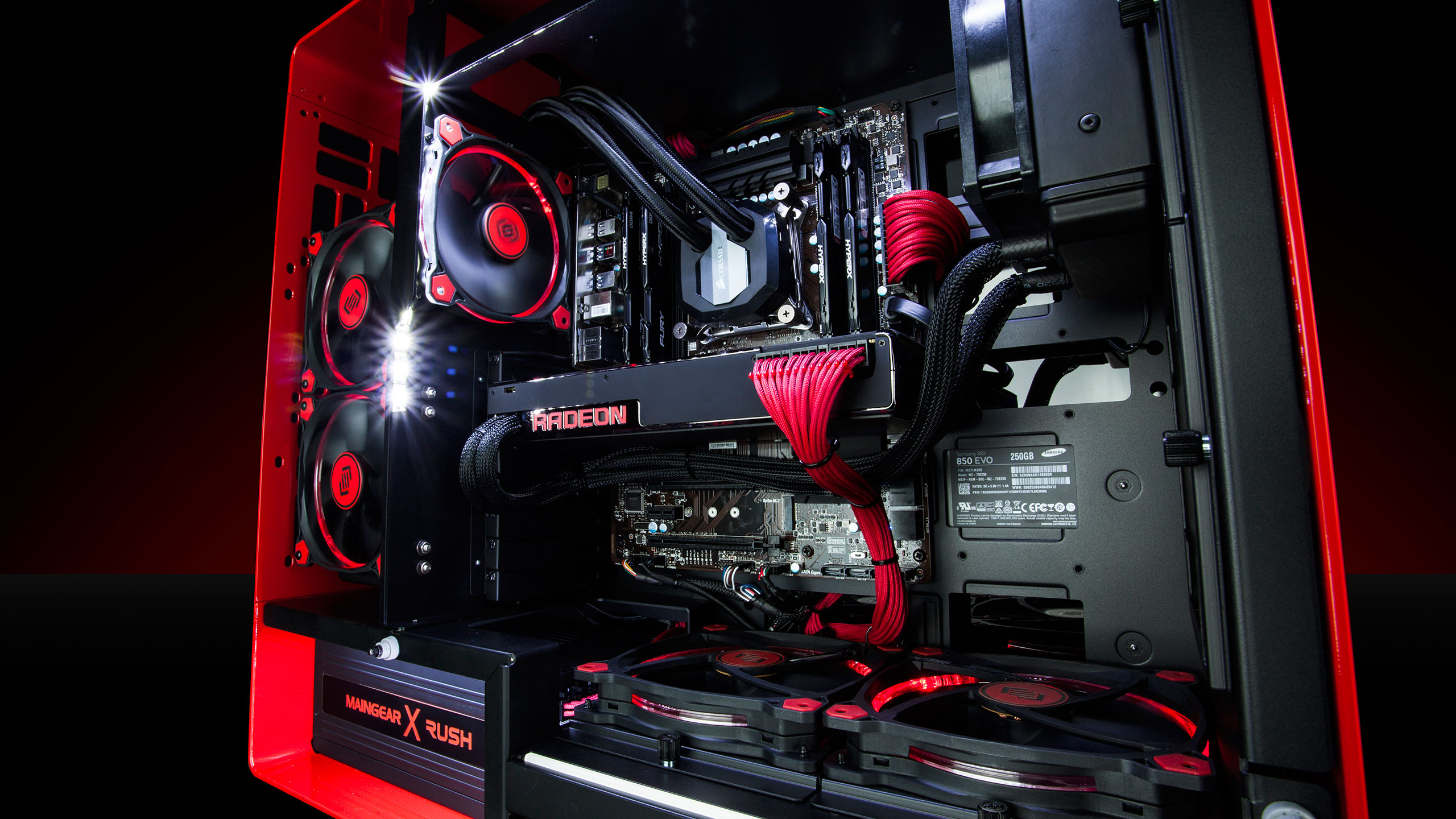AMD's Radeon Pro Duo is a dual-GPU monster with 3 power connectors

We've known AMD was planning a release of a dual-GPU Fiji product since last summer, but other than a brief publicity stint at the R9 Fury X launch, there's been little to speak of. Finally, seven months later, we're getting the official name and an idea of the specs. And let me tell you, this is a whopper of a GPU.
It starts of course with two Fiji chips, which means we're still looking at two GPUs with 4GB of HBM RAM each. That's unfortunate for a halo product, since AMD has mainstream gaming GPUs like the R9 390 going for just over $300 that already have 8GB VRAM, but such is the nature of HBM 1.0. The real star of the show is the card itself.
Like the R9 295X2 and other recent dual-GPU cards from AMD, the Radeon Pro Duo features a closed-loop liquid cooling solution. Even with the compact dimensions of Fiji, however, the card is quite a bit larger than a Fury X—we need room for the second GPU, interposer, and HBM, naturally. But where this card is a big departure from earlier designs is the power deliver. Check this out:

Yeah, that's three PEG connectors, and not just any connectors—they're all 8-pin PEG connectors. It may not be capable of guzzling 1.21GW of power and traveling through time, but the Radeon Pro Duo is the first GPU ever to come direct from AMD or Nvidia and feature three PEG connections. (PowerColor did make a crazy quad-PEG GPU with dual R9 390 chips, and EVGA had a dual 8-pin plus single 6-pin card as well, but those were from add-in board partners.) Combined, they're theoretically able to deliver up to 450W of power, plus another 75W from the x16 slot, which means the Pro Duo could use as much as 525W of power. In reality, the Pro Duo is set to run as dual R9 Nano cards, and the total TDP is only 350W, though overclocking could certainly push it higher.
All the usual caveats of CrossFire apply, meaning if a game doesn't work well with CrossFire, you're SOL. It's still too early to say if DirectX12 or Mantle will make dedicated driver support for SLI and CrossFire a thing of the past, but for now, expect plenty of games to lack good CrossFire support at launch.
As is generally the case, you're also paying more for a single card with two GPUs integrated than you'd pay for two separate GPUs. You can currently find the Fury X for around $640 online, which means $1280 for two cards. The Radeon Pro Duo meanwhile is slated to have a $1500 MSRP. The good news is that you don't need to find room for two CLCs, and going quad-GPU is certainly possible, if you happen to enjoy the lifestyle of the rich and famous.
AMD is pitching the Radeon Pro Duo as the "most powerful platform for VR," and they're touting the benefits of their LiquidVR SDK again. AMD also notes that this is the initial product in their AMD VR Creator line. The Pro Duo then is more for developers of VR rather than consumers, and that's not necessarily a bad thing, since we can expect a similar performance single-GPU solution from Polaris sometime in the coming year.
Keep up to date with the most important stories and the best deals, as picked by the PC Gamer team.
AMD anticipates the Pro Duo will be available in early Q2 2016.
Jarred's love of computers dates back to the dark ages when his dad brought home a DOS 2.3 PC and he left his C-64 behind. He eventually built his first custom PC in 1990 with a 286 12MHz, only to discover it was already woefully outdated when Wing Commander was released a few months later. He holds a BS in Computer Science from Brigham Young University and has been working as a tech journalist since 2004, writing for AnandTech, Maximum PC, and PC Gamer. From the first S3 Virge '3D decelerators' to today's GPUs, Jarred keeps up with all the latest graphics trends and is the one to ask about game performance.


